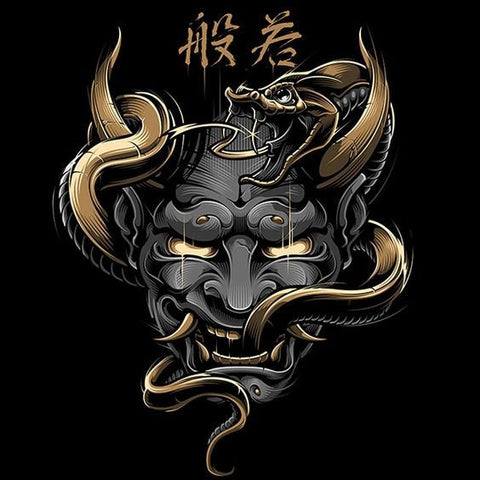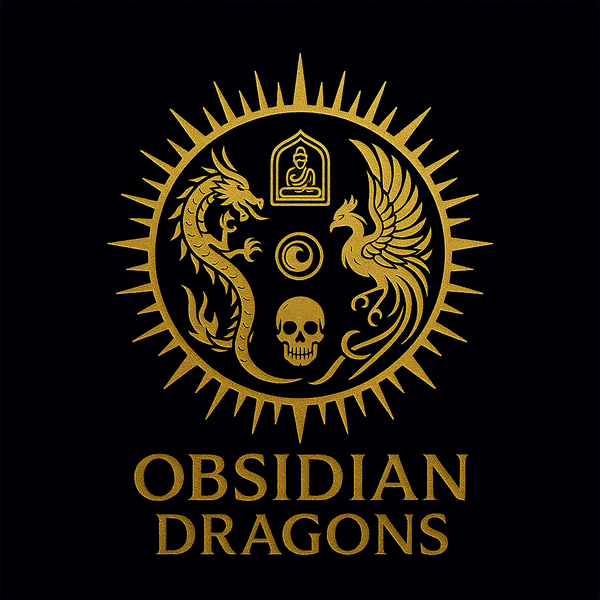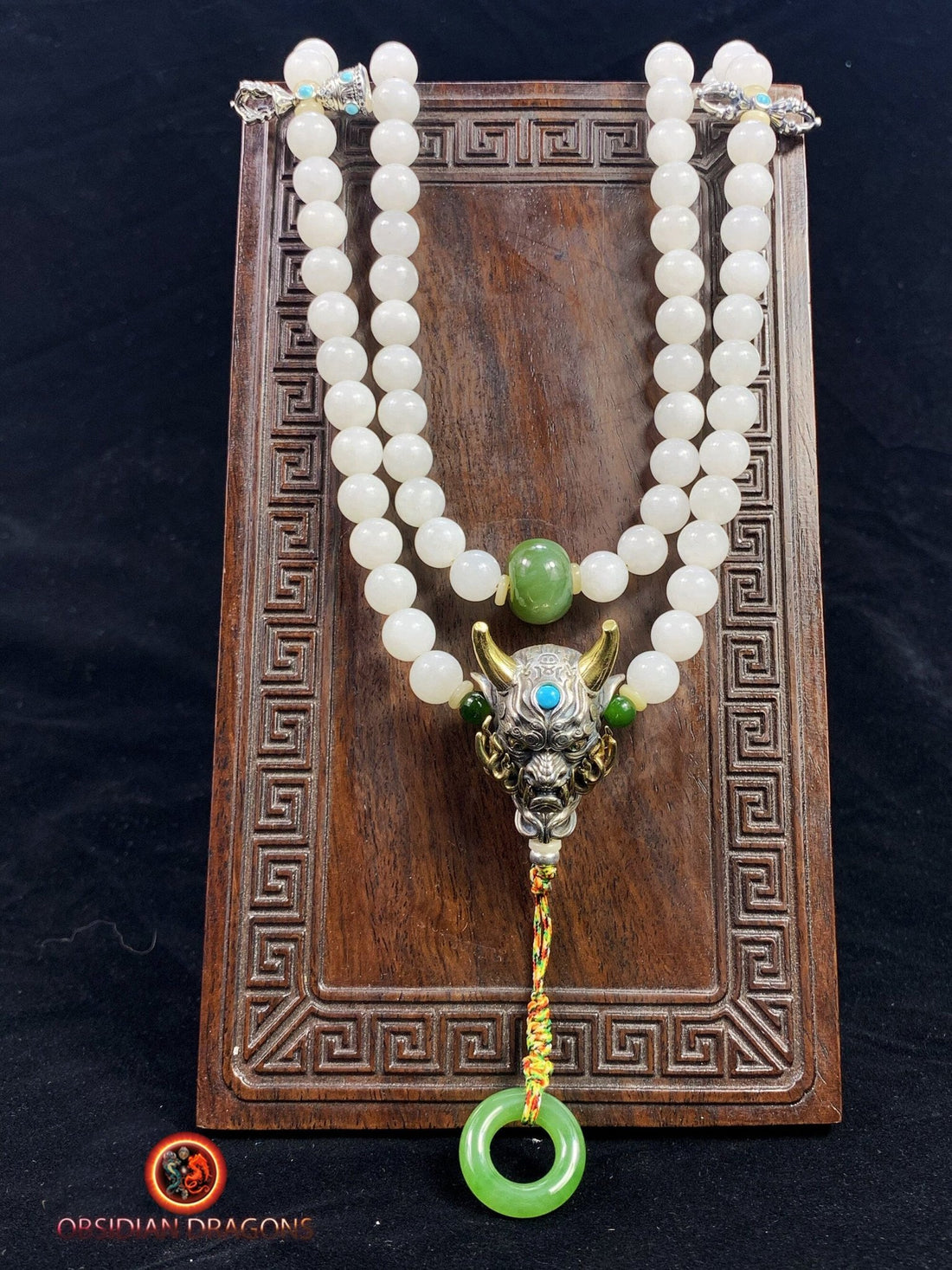
hannya, demon woman of Japan
Share
Hannya (般若) is a Japanese demon. In fantasy legends and beliefs, it represents the ghost of a young woman returned from the afterlife to satisfy her desire for revenge. This demon, very dangerous, mainly represents anger and jealousy. It is classified among the yokai and happens to be an oni .
The term " Hannya " comes from the Sanskrit " prajna " which means "great wisdom
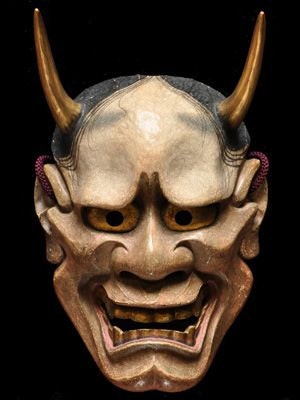
Yōkai (妖怪, ghosts , phantoms , strange apparitions ) are a class of monsters, spirits, and demons. The word yōkai is composed of the kanji for "bewitching; attraction; calamity" and "specter; apparition; mystery; suspicious". They may also be called ayakashi (あやかし), mononoke (物の怪), or mamono (魔物).
According to Japanese animism, spirit-like entities called (among others) mononoke resided in all things. These spirits possessed emotions and personalities. If the spirit was peaceful, it was a nigimitama, bringing good fortune, such as bountiful harvests. Violent spirits, aramitama, brought bad luck, and included illness and natural disasters. Ancestors and deceased elders, who were particularly respected, could be recognized as nigi-mitama , gaining the status of patron gods to be worshipped. Animals, objects, and natural features or phenomena were also venerated as nigi-mitama or propitiated as ara-mitama —depending on the area.
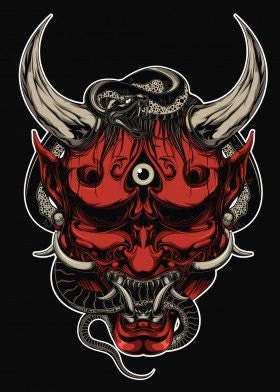
Oni (鬼), a type of Yokai, are typically depicted as imposing figures with one or more horns protruding from their heads. Stereotypically, they are depicted as red, blue, or green, wearing tiger skin loincloths, and carrying iron kanabo maces.
Their skin can be any number of colors, but red, blue, and green are particularly common. They can sometimes also be depicted as black-skinned or yellow-skinned. They can sometimes be depicted with a third eye on the front, or extra fingers and toes.
Hannya refers to female demons called kijo - even more specifically to those kijo that appear in noh theater. They were once human women who were consumed by jealousy and transformed into demons. The name hannya also refers to a specific type of demon mask used in noh theater.
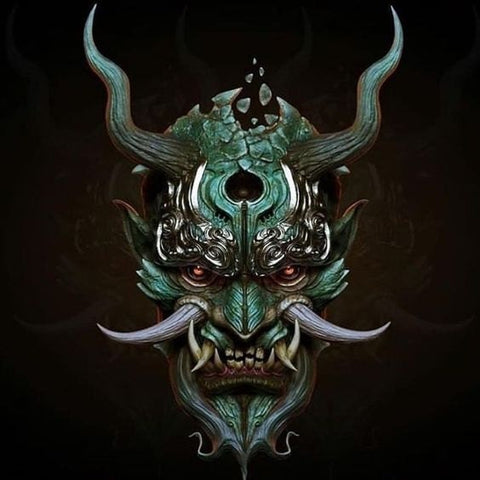
There are three types of Hannya, depending on the level of evil you have... or the degree of jealousy that dominates you.
The first and weakest is the Namanari, is a woman who still retains human appearance,
This spirit uses black magic to do evil deeds and attack the source of his jealousy. Although he is an evil being, he still has the possibility of regaining his humanity.
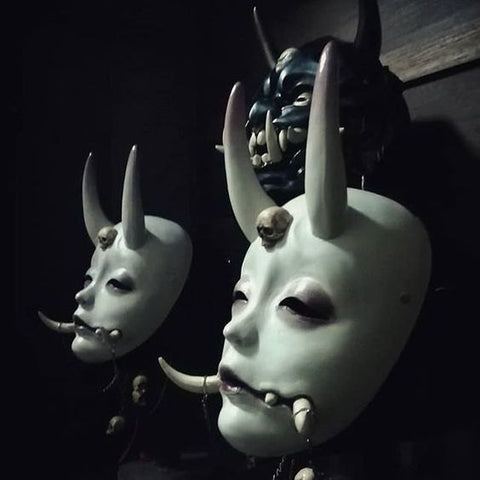
The second is the Chunari type Hannya, more powerful and terrible than a Namanari, but has not yet undergone a total transformation and can be saved with the Buddhists. The Chunari have horns and fangs, large and sharp, and their face has been transformed into that of a demon. Their magic is also more powerful
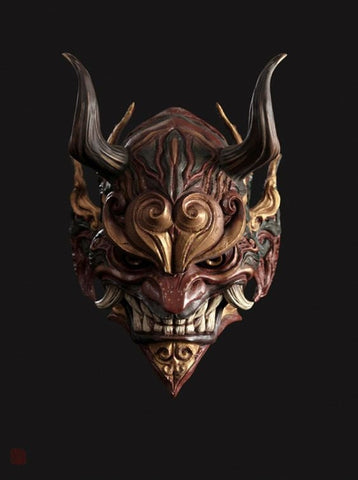
And finally the most powerful Hannya, the Honnari. They are already complete demons, with serpentine bodies, fire breathing and dark magic as powerful as it is feared. Those women who reach this level of jealousy are already trapped in the devil's body until the end of their days.
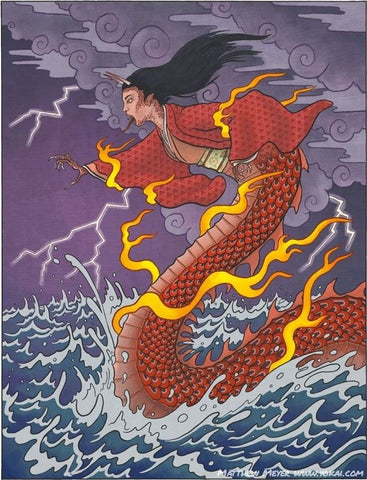
Although the legend likely predates the character's intrusion into Noh theater, it has come to this day because of his popularity in that art. Most famous Hannya with Ms. Rokujô from the work Aoi no Ue, Kurozuka from Kurozuka and Kiyo-hime from Dôjô-ji.
Hannya comes from the Sanskrit term for wisdom – specifically Prajñāpāramitā, the highest form of Buddhist wisdom that leads to enlightenment. The juxtaposition of the highest form of wisdom and creatures that represent direct opposition to that wisdom comes from the use of the hannya mask in noh. In the room Aoi no Ue , a shugenja (an ascetic mystic) exorcises the spirit of Lady Aoi's hannya Lady Rokujō. As he is being chased away, the evil spirit cries out, “Oh, how horrible!” The voice of wisdom is like a demon! » Since then, demonic masks and wisdom have been associated with each other.
Between 794 and 1185 AD, during the late Heian period, a classical Japanese era, the legend of a man named Watanabe no Tsuna, a brave samurai faced a female demon known as Hannya, whose sole purpose was to frighten the city's passersby who passed by him, while using all his strength in forcing him to cross the Rajōmon (the castle gate), a large gate located in the southern part of Suzaku Avenue, in the city of Kyoto.
One day, the samurai was approached by a beautiful young woman, who implored his help, asking him to accompany her to the city. He could not refuse and together they began the journey, in which Watanabe no Tsuna discovered by chance, when he looked over his shoulder, how this being was transformed into an evil demon that was defeated with his sword, cutting half of the bra threads. The wounded fled the scene screaming, and the samurai, in memory of his confrontation, took the creature's arm and carefully wrapped it up and placed it in a chest.
One day, the maimed demon took the form of Watanabe's aunt, asking her to show him this famous trophy guarded with such zeal, preciously for so many years. The creature had returned to its original form and throwing itself at the box managed to return with its limb fleeing Watanabe's house, who never confronted it again.
The color that these masks take, not in the theater, is very significant. A white mask evokes the soul of an aristocratic woman, well-bred, educated.
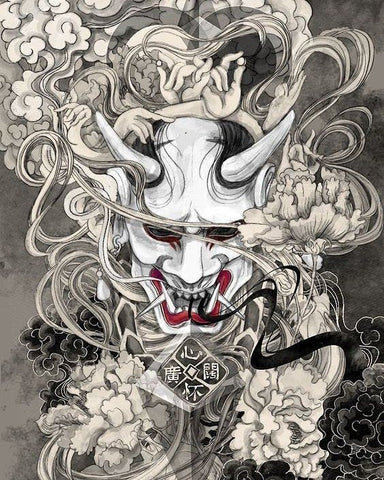
A red mask rather evokes the soul of a peasant woman.
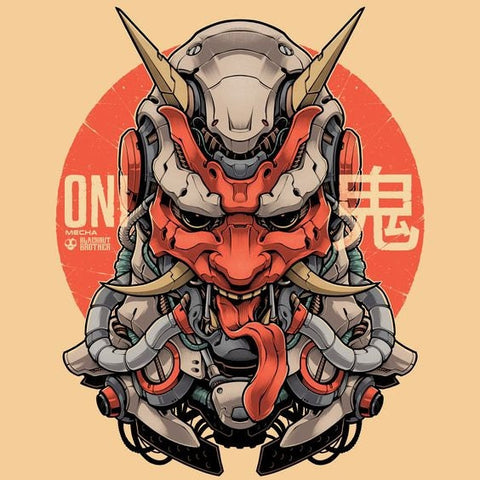
Finally, the dark red mask, the most dangerous, evokes the soul of a real demon who had transformed into a human in order to deceive the world and who reveals herself upon her death.
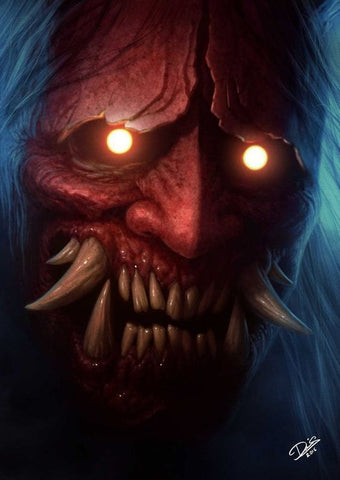
His fury seen on the face gives way to great sadness when the mask tilts.
Many traditions give an origin to the name Hannya, but the most probable traces the origin of the mask to the mask carver Hannyabou who was active in the late 15th and early 16th centuries. The oldest Noh mask depicting Hannya is dated 1558. Carved from camphor or cypress wood and coated with limited polychromy and a layer of transparent lacquer, these masks are often the work of well-known sculptors who can be identified by the presence of a seal on the mask. These masks filter the voice and prevent a clear vision of the stage space because it obscures almost the entire actor's face. Usually it is a little smaller than a human face.
